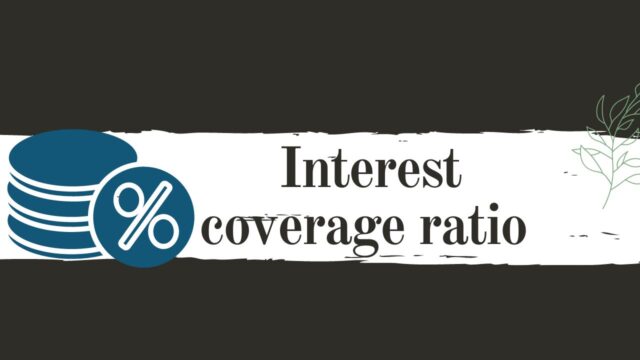
What is the interest coverage ratio
The interest coverage ratio is a financial ratio that is used to determine how well a company is able to pay the interest on its outstanding debt. The higher the ratio, the better able the company is to make its interest payments. The ratio is calculated by dividing a company’s earnings before interest and taxes (EBIT) by its interest expenses. For example, if a company has an EBIT of $1,000 and its interest expense is $500, its interest coverage ratio would be 2.0.
A company with a higher ratio is said to have more “cushion” to cover its interest payments. Generally, a ratio of 2.5 or higher is considered to be healthy. However, the ideal ratio will vary depending on the industry in which the company operates. For example, companies in more volatile industries may need a higher ratio in order to reduce the risk of defaulting on their debt payments.
How to calculate the interest coverage ratio
To calculate the interest coverage ratio, divide a company’s earnings before interest and taxes (EBIT) by its total interest expenses. The resulting number indicates how many times over a company can make its interest payments with its current level of earnings. A higher interest coverage ratio indicates that a company is in better financial health, as it suggests that the company has more earnings available to make debt payments.
Conversely, a lower interest coverage ratio indicates that a company is in worse financial health, as it suggests that the company has less earnings available to make debt payments. For example, if a company has an EBIT of $1 million and total interest expenses of $500,000, its interest coverage ratio would be 2 (1 million divided by 500,000). This would indicate that the company has two times more earnings than it needs to make its interest payments.
What are some factors that can affect the interest coverage ratio
The higher the ratio, the more capable the company is of meeting its obligations. However, there are a number of factors that can affect the ICR, making it an imperfect measure. For example, companies with large amounts of debt may have high interest payments but still be capable of meeting those obligations. In addition, companies may use accounting techniques to mask their true level of debt and make themselves look more financially healthy than they actually are. As a result, while the ICR is a useful tool, it should only be one part of a larger financial analysis.
What is a good interest coverage ratio
There is no “ideal” interest coverage ratio, as it will vary depending on the industry and the specific circumstances of a company. However, Generally speaking, a ratio of 3.0 or higher is considered to be strong, while a ratio below 1.5 is considered to be weak. Anything in between these two extremes can be considered to be average.
The interest coverage ratio is an important metric for investors to keep an eye on, as it can give them an idea of a company’s financial health. Additionally, lenders will often use the ratio to help them decide whether or not to extend credit to a particular borrower. When evaluating a company’s interest coverage ratio, it is important to keep in mind other factors such as the current economic conditions and the overall health of the industry.
What is a bad interest coverage ratio
A bad interest coverage ratio is typically considered to be anything below 1.5. This means that for every $1.50 of debt, the company only generates $1 of earnings. While companies with high debt levels often have lower interest coverage ratios, this is not always the case. Some companies may have high debt levels but also generate a significant amount of income, resulting in a high interest coverage ratio. Ultimately, it is important to evaluate a company’s interest coverage ratio in conjunction with other financial information to get a complete picture of its financial health.
Are there any limitations to the interest coverage ratio
However, it is important to note that the interest coverage ratio has its limitations. For one thing, the ratio does not take into account a company’s other financial obligations, such as principle payments on loans. In addition, the ratio does not consider the timing of interest payments, which can be important in some cases. Finally, the ratio does not adjust for changes in accounting methods or tax rates, which can potentially impact a company’s bottom line. Despite these limitations, the interest coverage ratio remains a useful tool for investors and analysts alike.
What are some real-world examples of the interest coverage ratio in action?
There are a number of real-world examples of the interest coverage ratio in action. One well-known example is Enron, which had an ICR of over 100 just before its collapse in 2001. This high ICR gave lenders confidence that Enron would be able to meet its interest payments, and it allowed the company to take on more debt than it could ultimately handle. Another example is General Motors, which filed for bankruptcy in 2009. At the time, GM’s ICR was just 0.8, meaning that it was barely generating enough income to cover its interest payments. This low ICR was one of the warning signs that led to GM’s bankruptcy filing.


































